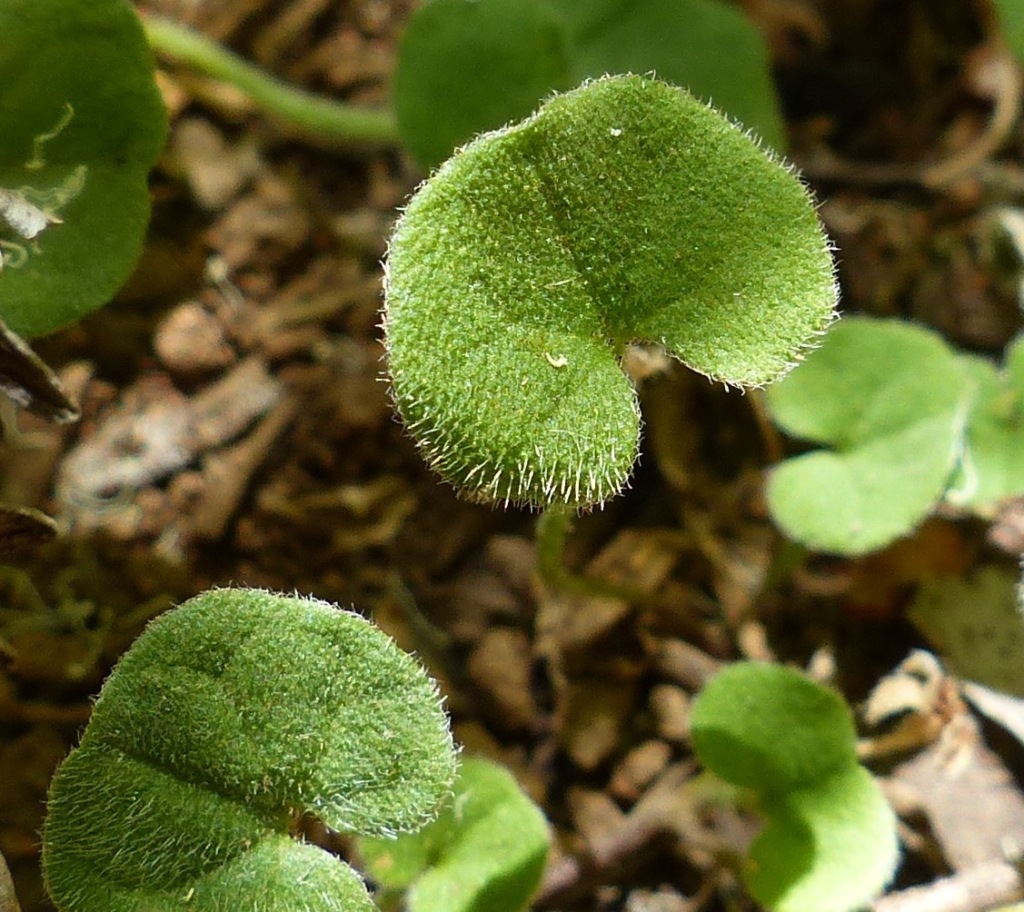Dichondra repens
J.R.Forst. & G.Forst. Kidney-weedPerennial herb, greyish-pubescent, rarely glabrescent. Leaves reniform to suborbicular, mostly 5–25 mm long, 5–30 mm wide, apex rounded to emarginate, base cordate, both surfaces sparsely to moderately pilose; petiole usually 10–50 mm long. Flowers solitary; pedicels 5–60 mm long, not recurved in fruit; sepals oblong-elliptic, 2–3 mm long at anthesis (enlarging to 4.5 mm long in fruit), shortly united at base, pilose; corolla rotate, 2.5–4.5 mm long, glabrous, pale greenish-yellow, tube to c. 1 mm long, lobes ovate-elliptic. Capsule deeply 2-lobed, shorter than calyx when ripe. Flowers mainly spring and summer.
LoM, MuM, Wim, GleP, Brid, VVP, VRiv, MuF, GipP, OtP, WaP, Gold, CVU, GGr, DunT, NIS, EGL, EGU, WPro, HSF, HNF, OtR, Strz, MonT, HFE, VAlp. Also WA, SA, Qld, NSW, NI, ACT, Tas. Common and widespread throughout most of Victoria in a variety of habitats and also a weed (or deliberate component) of lawns.
Very variable with respect to indumentum density and pedicel length. Forms from swampy sites in the Edenhope-Penola-Casterton area approach Dichondra sp. 1 in indumentum and a tendency for fruiting pedicels to recurve, but the floral measurements are more typical of D. repens.
Jeanes, J.A. (1999). Convolvulaceae. In: Walsh, N.G.; Entwisle, T.J., Flora of Victoria Vol. 4, Cornaceae to Asteraceae, pp. 365–375. Inkata Press, Melbourne.
 Spinning
Spinning



